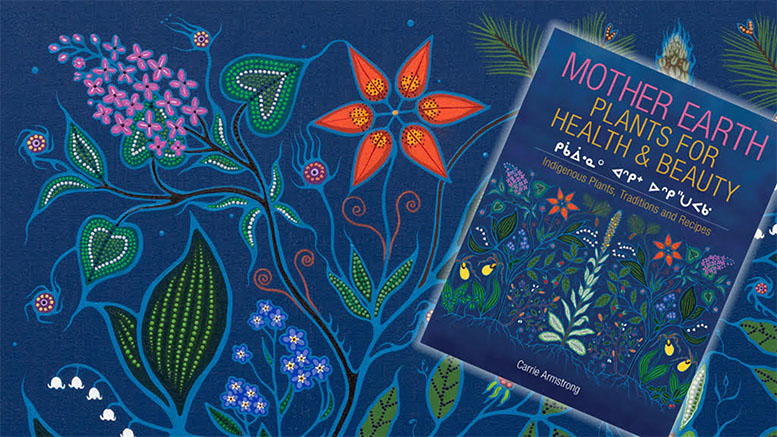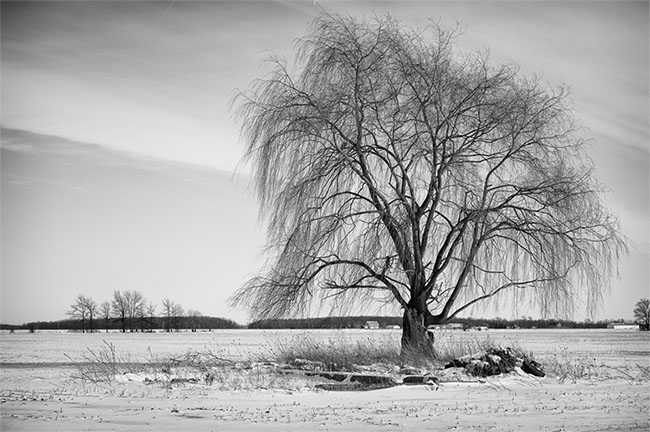By Laura Mushumanski, Local Journalism Initiative Reporter
(ANNews) – Below ground level, the nîpisîy mistik (willow tree) unites all roots systems as it holds hands in unity with all its relations on okâwîmâwaskiy. The calming and grounding essence of a nîpisîy mistik connects us to the gifts okâwîmâwaskiy provides for us.
Much like the nîpisîy mistik, when our autonomic nervous system is regulated, we can grow in abundance with love and compassion for all living things. But if there is a disruption within our familial ties, we struggle with nurturing ourselves and others, and growing strong and resilient like the nîpisîy mistik.
When Carrie Armstrong was a young girl, she was taught the teachings of plants by her Metis grandmother. She remembers her grandmother being very guarded and nervous, she was fearful and ashamed. Her grandmother had two sides to her – one where she shared her knowledge about plants and medicines, and the other where she was afraid her grandchildren would be taken away from her – a too familiar feeling from when her own children were taken away to an Indian Residential School.

A new book by Carrie Armstrong
The heart of the nîpisîy mistik provides us with medicine, and each one of us is the medicine in the centre of our own medicine wheel. If our spirit has been hurt, then our nervous system will be dysregulated, and our connection to okâwîmâwaskiy becomes lost.
Our autonomic nervous system has two branches: the sympathetic that enables us to go into fight-or-flight mode when we sense danger, and the parasympathetic, our nîpisîy mistik, that has a calming effect on our heart rate, and in turn relaxes our body, mind and spirit. When there has been a disruption within our familial ties, the pain and suffering that comes with it, although we cannot see but feel, our nervous system will keep replaying hardship as it cannot distinguish between reality and past traumatic events.
The branches that build the frame to our ceremonial sweat lodges, resembling the rib cage inside our mother’s womb, come from the nîpisîy mistik. The willow branches gift us the opportunity to engage in ceremony, and in prayers, respect and gratitude for our ancestors that have walked before us on okâwîmâwaskiy and gifted us the responsibility of paving the way for the generations that come after us.
The flexible and strong willow branches create a space for ceremony; our ways teach us that in sweat, the lodge represents the womb and rebirth. The connection the nîpisîy mistik shares with ceremony and okâwîmâwaskiy becomes a part of our healing journey. And part of our healing is finding our purpose in this lifetime, our gifts to share with others, our supportive roles within our communities, and to strengthen our connection to Creator.
The nîpisîy mistik benefits our livelihood as a food source, medicine and in ceremony. And when we are connecting with okâwîmâwaskiy, the nîpisîy mistik can also ground us.
The nîpisîy mistik is known for its healing properties and as part of our traditional ways, willow bark aids in pain, inflammation and fevers.
For Carrie Armstrong, the nîpisîy mistik symbolizes the strength that okâwîmâwaskiy provides for us, kindness that she gifts us, and love that flows in an abundance like the wind that carries a songbird’s voice through the serene mornings on a cool autumn day.
“Wisdom is knowing how to act, and not react.”
The wise woman tea that Armstrong blends together represents to her what it means to be a woman- strong and wise. When she blends together red clover, sage and raspberry leaves, that is Armstrong engaging in rewriting, healing and reconciling with her family’s history of hardship, and gifting her three children with the strength and wisdom the medicines gifted her.

Carrie Armstrong
Armstrong found healing when she connected with the same medicines her grandmother worked with. Her love for connecting with the land, provided a safe place for her to ground her body, mind and spirit.
“The piece you need to heal, is the piece that we need to learn on how to be alone.”
Armstrong, the founder of Mother Earth’s Essentials, walked with faith and found courage to connect with the gifts Creator has gifted her.
She went back to school later in life so that she could teach. She was given the opportunity of incorporating plant teachings into everyday curriculums, that led to sparking interest in the kids through teaching them how to engage with plants through taste, touch, smell, hearing and sight- our five senses.
When we engage with our senses, we are calming our nervous systems and healing ourselves, and indirectly healing our communities.
In 2006, Armstrong began to blend not only teas, but beauty products from okâwîmâwaskiy. She incorporated the same teachings that she embodied when she was a little girl when she began to showcase the beauty of our culture.
The aromatic medicines of sweetgrass, sage, cedar, peppermint, lavender and patchouli that Mother Earth’s Essentials lotions, candles, soaps, essential oils and shampoos relishes in, gifted our brothers and sister across Turtle Island with the teachings from Armstrong’s grandmother. And by doing things the way our people traditionally would, this became Armstrong’s way of sharing her knowledge, connecting to healing, and taking responsibility in making sure her grandmother’s teachings were not being lost.
A big part of healing for Armstrong is education, and connecting and engaging with community. And with Armstrong’s love for blending teas she hand picked, she was able to launch a line of raspberry leaf, sage, elderberry, wild mint, yarrow, muskeg, nettle, and white willow teas to share with communities across Turtle Island, Askiy Tea.
By honouring her grandmother’s memory, the gifts Armstong offers all our relations has recently been published into a book, Mother Earth: Plants for Health & Beauty, gifting us with teachings of 26 edible and medicinal plants okâwîmâwaskiy shares with us.
Perhaps there is a teaching in itself, when kohkom would send us out into the bush to find the perfect nîpisîhtak (willow stick) for when we misbehaved, and that the teaching was how to ground ourselves amongst chaos of the external world that had no place for the serenity okâwîmâwaskiy gifts us.
Recipes from Carrie Armstrong (click here for more)
Elderberry Syrup Recipe
Quick and easy, and more affordable than the store-bought version!
Take1 teaspoon when you feel like you need an immune boost; up to 3 times a day. (Note: Do not give honey to children under 1 year of age.)
Ingredients
1/2 cup dried elderberries
2 cups water
1 tablespoon fresh ginger, minced (optional)
1/2 cup honey
fine mesh strainer
Instructions
Combine the elderberries, water, and ginger (if using) in a small saucepan over high heat and bring the mixture to a boil.
Lower the heat and allow the mixture to simmer until the water has been reduced by half, about 20 minutes.
Transfer the cooked berries and liquid to a clean bowl and pour it through a fine mesh strainer to remove the berry skins.
Use the back of a spoon to press on the berries in the strainer, to extract all of the juice, then discard the small amount of pulp left in the strainer.
Allow the elderberry juice to cool to room temperature, so that the heat doesn’t harm the nutrients in the honey, then stir in the honey.
Use a whisk to incorporate it smoothly, then transfer the syrup into a sealed glass jar that you can store in the fridge.
This syrup should keep well for at least two weeks when stored in the fridge, so if you don’t think you’ll use it all before then, feel free to freeze any extras. You can always thaw it overnight in the fridge when you need more.
Homemade elderberry syrup doesn’t become as thick as the store bought version because it uses less sugar and no preservatives or thickeners, so don’t be alarmed if the final syrup has a more liquid consistency.
Cold and Flu Healing Tea Recipe
I was taught that there is a particular bird that uses yarrow to line its nest in order to keep parasites away. Yarrow has been used traditionally to treat fever and diarrhea. Wild Mint is a great complementary plant because it helps with congestion and inflammation.
Ingredients
10 grams masân (Nettle)
10 grams wâpanewask (Yarrow)
10 grams âmiskowêhkask (Wild Mint)
Combine plants and store in an airtight container away from direct sunlight for up to 2 years.
Instructions
To prepare drinking tea, use about 5 grams of tea blend for each 250 mL of water.
Do not pour boiling water over your herbs, or you will burn the leaves. Bring the water to a boil and let it sit for a few minutes to cool slightly before adding the herbs.
You can use a tea strainer of some kind, or just let it sit in the cup.
Allow the tea to steep for at least 5 minutes.



Be the first to comment on "Okâwîmâwaskiy (Mother Earth’s) willow tree: Its role in ceremony, healing, and rebirth"